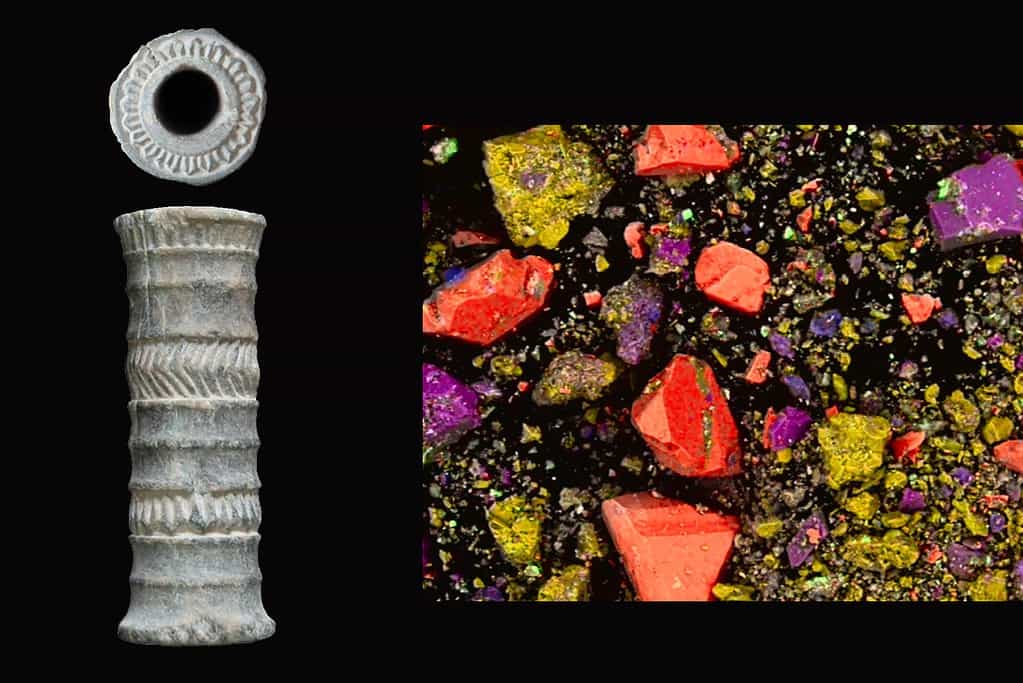A new study reveals that an ancient lipstick vial housed in Iran’s Archaeological Museum of Jiroft, Iran, since 2001, is actually the oldest lipstick ever discovered.

Created between 1936 and 1687 BCE, the lipstick tube is about 4,000 years old. What’s more surprising is that the study authors were also able to recover the makeup material from it, even after so many years.
“We have little opportunity to find direct evidence of cosmetic use on bodies, as these are rarely preserved with the obvious exception, for example, of ancient Egypt,” Emma Louise Baysal, an expert on prehistoric ornaments and cosmetics at Ankara University, told Business Insider.
Not an ordinary lipstick
The lipstick container is made of a mineral called chlorite and inside, it contains a red color pigment that closely matches the chemical formulas used in today’s lipsticks, according to the study authors.
The researchers suggest that the lipstick was used by the Marḫaši people who once ruled the eastern part of Iran. They are considered a dominant civilization and the lipstick was possibly used by Marḫaši elites.
But we’re not actually sure who really used the lipstick.
It is also possible that both men and women used such lipsticks because in ancient times men also used to apply makeup. For instance, some reports suggest that ancient Egyptian men decorated their eyes with a version of eyeliner. Overall, we have very little information regarding how ancient cultures used any type of make-up.
Lipstick meets science
During their study, the researchers mainly focused on studying the lipstick ingredients. They extracted a powdered material from the vial and ran several tests on it to determine its composition.
“Through analytical research involving XRD (X-ray diffraction), SEM–EDS (scanning electron microscopy-energy-dispersive spectroscopy), and HPLC–MS (high-performance liquid chromatography-mass spectrometry) analyses, the mineral components of the reddish substance were identified as hematite, darkened with manganite and braunite, and traces of galena and anglesite, mixed with vegetal waxes and other organic substances,” the study authors note.
What’s interesting is that several modern-day red lipsticks are also composed of hematite. The mineral is known to leave a red mark, which is possibly how the ancient culture thought to use it in make up.
The presence of vegetal fibers further suggests that the lipsticks had a fragrance. Moreover, its vial has beautiful, detailed markings, making it different than any other cosmetic packaging of that time.
“The vial displays intricate craftsmanship, featuring fine incisions, and bears resemblance to a marsh cane segment. The association between such a peculiar form and the quite unusual content potentially supports the idea that cosmetic products in ancient times were branded, packaged, and traded,” the study authors added.
It is possible this Iranian artifact was the first branded luxury lipstick ever made. However, further research is needed to validate this theory.
Why should we care about the ancient lipstick?
Ancient cosmetics are rarely found and studied because most of them fail to remain preserved for a long time. However, they hold ample amounts of information about beauty standards, social hierarchies, culture, and the understanding of mineralogy within ancient societies.
For instance, the distinct appearance of the lipstick vial suggests that the Bronze-Age Marḫaši people valued cosmetic items, they were skilled at making and packaging them, and possibly, even traded them as luxury goods.
Massimo Vidale, one of the study authors and an archaeologist, told Smithsonian Magazine:
“The scarce attention paid to this ancient Bronze Age industry, I believe, is due to the fact that it has been considered a secondary ‘women’s matter.’ In contrast, it was a costly expression of luxury that played a crucial role in shaping social interaction in the hierarchies of the early cities.”
He further suggests that scientists have never encountered a cosmetic preparation as detailed as the Iranian lipstick. It has the potential to reveal several previously unknown clues about Bronze Age societies and cultures.
The study is published in the journal Scientific Reports.






